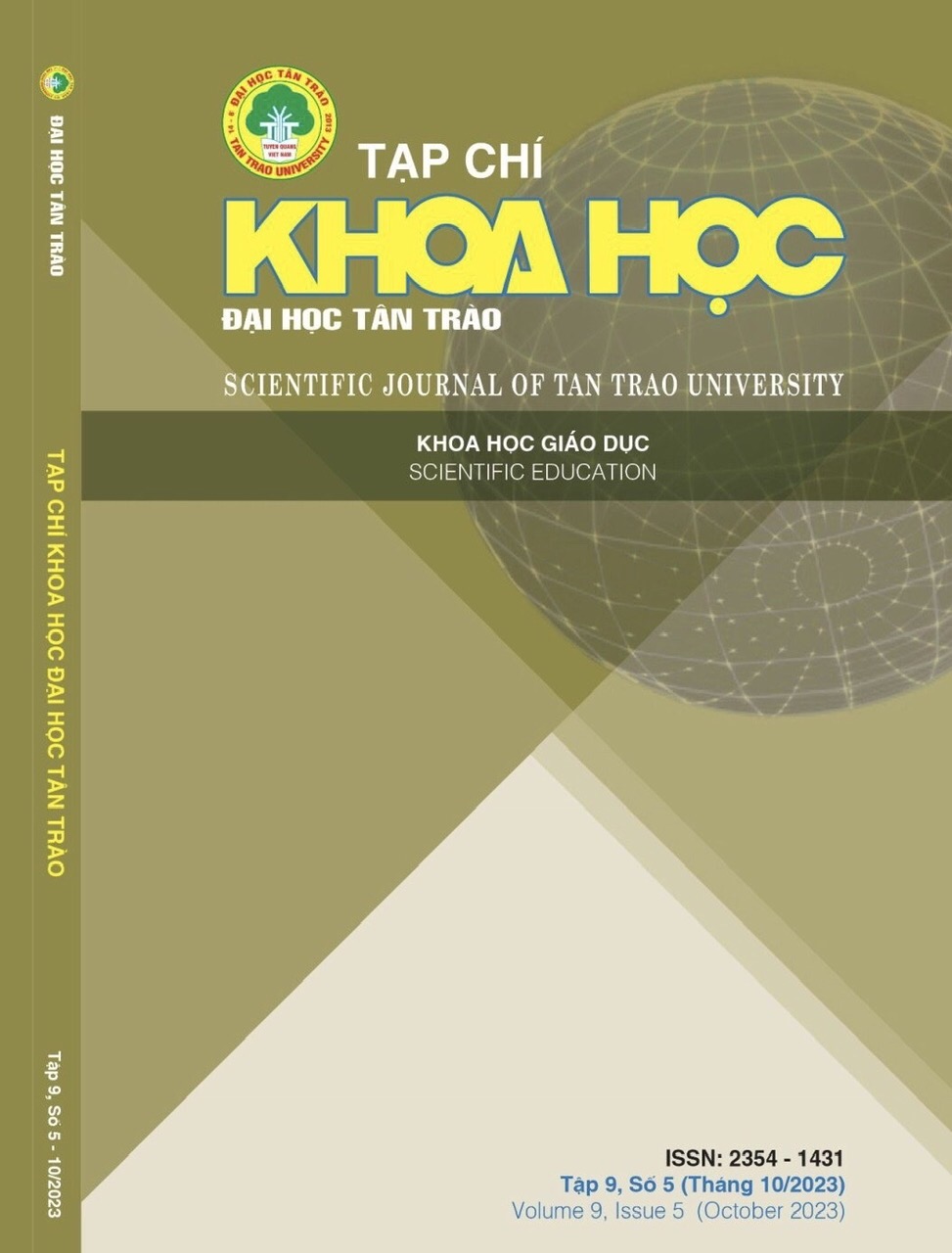CONTINUOUS REGULARIZATION METHOD FOR A COMMON MINIMUM POINT OF A FINITE SYSTEM OF CONVEX FUNCTIONALS
DOI:
https://doi.org/10.51453/2354-1431/2023/910Abstract
The concept of the ill-posed problem was introduced by Hadamard, a French mathematician in 1932 when he studied the effect of the boundary value problem on differential equations. Due to the unstability of the ill-posed problems, the numerical computation is difficult to do. Therefore, one of the main study directions for ill-posed problems is construct stable methods to solve this problems such that when the error of the input data is smaller, the approximate solution is closer to the correct solution of the original problem. Although there are some known important results obtained in studying the regularization method for solving the ill-posed problems, the improvement of the methods to increase their effectiveness always attracts the attention of many researchers. In this paper, we present a regularization method for a common minimum point of a finite system of Gateau differentiable weakly lower semi-continuous and properly convex functionals on real Hilbert spaces. And then, an application our theoretical results to convex feasibility problems and common fixed points of nonexpansive mappings.
Downloads
References
[1]. M. M. Vainberg, Variational method and method of monotone operators, Moscow: Mir, 1972.
[2]. Ng. Buong, Regularization for unconstrained vector optimization of convex functionals in Banach spaces, Zh. Vychisl. Math. I Mat. Fiziki, vol.46, pp. 372-378, 2006.
[3]. Ng. Buong, Ph.Th.Th. Hoai and Kh.Th. Binh, Iterative regularization methods for the multiple-sets split
feasibility problem in Hilbert spaces, Acta Applicandae Mathematica, vol. 165, pp. 183-197, 2020.
[4]. V. Barbu, Nonlinear semigrups and differential equations in Banach spaces, Noordhoff Intern. Publishing Leyden Netherlands: Acad. Bucuresti, Romania, 1976.
[5]. R.T. Rockafellar, Monotone operators and proximal point algorithm, SIAM Journal on control and Optim, vol. 14, pp. 877-897, 1976.
[6]. O. Guler, On the convergence of the proximal point algorithm for convex minimization, SIAM Journal on control and Optim, vol. 29, pp. 403-419, 2000.
[7]. I. P. Ryazantseva, Regularization proximal algorithm for nonlinear equations of monotone type, Zh. Vychisl. Math. i Mat. Fiziki, vol. 42, pp. 1295-1303, 2002.
[8]. A. Maudafi, Second order differential proximal methods for equilibrium problems, J. of Inequalities in Pure and Applied Math, vol. 4, 2003.
[9]. H.H. Bauschke, J. M. Borwein, On projection algorithms for solving convex feasibility problems, SIAM
Reviews, vol. 38, pp. 367-426, 1996.
[10]. H.H. Bauschke, S. G. Kruk, Reflection-projection method for convex feasibility problems with an
obtuse cone, J. Optim. Theory and Appl, vol. 120, pp. 503-531, 2004.
[11]. P. L. Combettes, Hibertian convex feasibility problem: convergence of projection methods, Applied Math. And Optimization, vol. 35, pp. 311-330, 1997.
[12]. F. Deutsch, I. Yamada, Minimizing certain convex finctions over the intersection of the fixed point sets for nonexpensive mappings, Numerical Func. Anal. And Optim, vol. 19,pp.33-56, 1998.
[13]. H.K. Xu, An iterative approach to quadratic optimization, J. Optim. Theory and Appl, vol. 116, pp. 659-678, 2003.
[14]. J. G. O’Hara, P. Pillay, and H.K. Xu, Iterative approach to finding nearset common fixed points of nonexpansive mappings in Hilbert spaces, Nonlinear Anal, vol. 54, pp. 1417-1426, 2003.
[15]. W. Takahashi, T. Tamura, and M. Toyoda, Approximatipon of common fixed points of a family of finite nonexpansive mappings in Hilbert spaces, Sci. Math. Jpn, vol. 56, pp. 457-480, 2002.8
[16]. J. S. Jong, Y. J. Cho, and R. P. Agarwal, Iterative schemes with some control conditions for a family of nonexpansive mappings in Banach spaces, Fixed Point Theory and Appl, vol. 2, pp. 125-135, 2005.
[17]. C. E. Chidume, Convergence theorems for a common fixed point of a finite family of nonexpansive mappings, Fixed Point Theory and Appl, vol. 2, pp. 233-241, 2005.
Downloads
Published
How to Cite
Issue
Section
License

This work is licensed under a Creative Commons Attribution-ShareAlike 4.0 International License.
All articles published in SJTTU are licensed under a Creative Commons Attribution-ShareAlike 4.0 International (CC BY-SA) license. This means anyone is free to copy, transform, or redistribute articles for any lawful purpose in any medium, provided they give appropriate attribution to the original author(s) and SJTTU, link to the license, indicate if changes were made, and redistribute any derivative work under the same license.
Copyright on articles is retained by the respective author(s), without restrictions. A non-exclusive license is granted to SJTTU to publish the article and identify itself as its original publisher, along with the commercial right to include the article in a hardcopy issue for sale to libraries and individuals.
Although the conditions of the CC BY-SA license don't apply to authors (as the copyright holder of your article, you have no restrictions on your rights), by submitting to SJTTU, authors recognize the rights of readers, and must grant any third party the right to use their article to the extent provided by the license.


